Redesigning the visitors’ museum experience
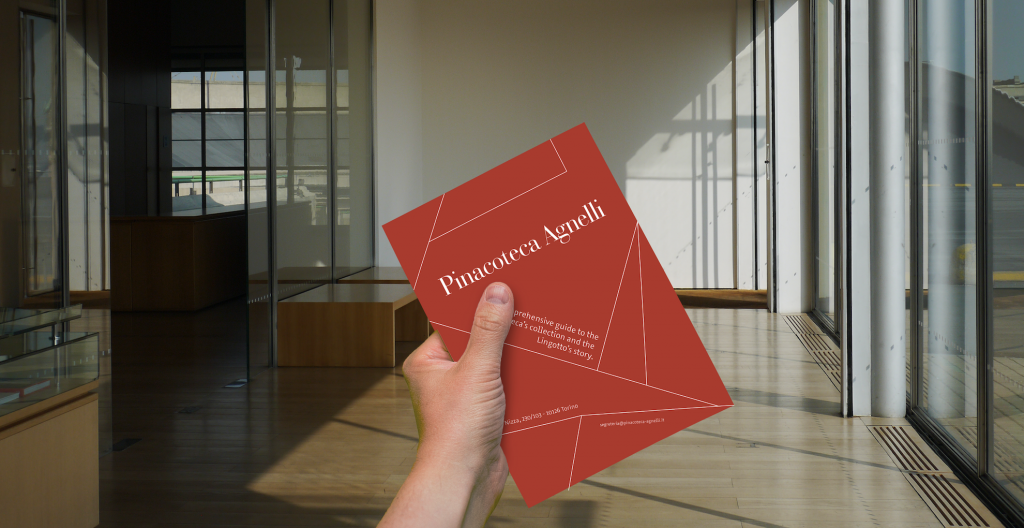
Redesigning the visitors’ museum experience Pinacoteca Giovanni e Marella Agnelli Share Reimagining and redesigning the museum experience that a visitor has through a careful analysis of the current pain points. 3 things to know Pain points of a visitor’s journey A systematic representation of an ordinary visitor’s journey that highlights the positive and negative aspects of the museum experience A concept for a new wayfinding system A proposal for the redesign of the elements that guide the visitors along the museum Ideas for a new museum experience A range of ideas that can improve the visitors’ experience, from redesigning spaces to offering new services. Gallery Take away navigation Informative facade Floor signage Signage The intensity of the visual elements becomes lighter going up Visitor journey map External view of the Renzo Piano designed museum In depth Service mix: Information architecture Service design Ethnography Context The art gallery, inaugurated in 2002, sits on the top floor of the Lingotto complex, the first FIAT factory and now a modern complex with concert halls, theatre, a convention centre, shopping arcades and a hotel. The Gallery contains a selection of works from the private collection of Gianni and Marella Agnelli. The collection is housed in the “jewellery box”, a steel body designed by Renzo Piano, with an area of 450 square meters raised 34 meters from the test track on the roof of the factory. Challenge The location within the Lingotto complex creates a multitude of wayfinding challenges for the visitor. The challenge was thus how to create a new visitor experience that helps guide visitors but also provides a new identity for the museum. Research Four colleagues explored and mapped the services provided by the Pinacoteca Agnelli. Only two were native Italian speakers. We collected experiences from people that visited Pinacoteca for the first time. This allowed us to create a systematic representation of an ordinary visitor’s journey that highlights positive and negative aspects of the museum experience. Design The design activities started with idea generation activities: we conducted several brainstorming sessions internally, merged the ideas that were similar, selected the most effective, and developed the most promising one in more detail. The next phase concentrated on developing a proposal for the redesign of the elements that guide the visitors along the museum, in other words a concept for a new wayfinding system. Following a process focused on the visitor experience, we took into account the visitors’ impression of the building to inspire the new design of the signage. A gradient recalls the experience that visitors have while going up the elevators: from a chaotic environment to a delightful and sophisticated art space. By using the shapes of the roof and the 5th floor we want to enhance the link to the architectural space by creating an echo of the structure inside the Pinacoteca Agnelli. We also developed a range of ideas that can improve the visitors experience, from redesigning spaces to offering new services. Impact The museum is in the process of implementing the Experientia design guidelines. Related projects All Services Behavioral design Research and assessment Strategy Brand UX Qualitative research on food and drink consumption to develop new consumer services Brand UX Packaging upgrade for Chinese food producer Go back to our portfolio
Reinventing customer and supplier interactions for a multinational flooring company
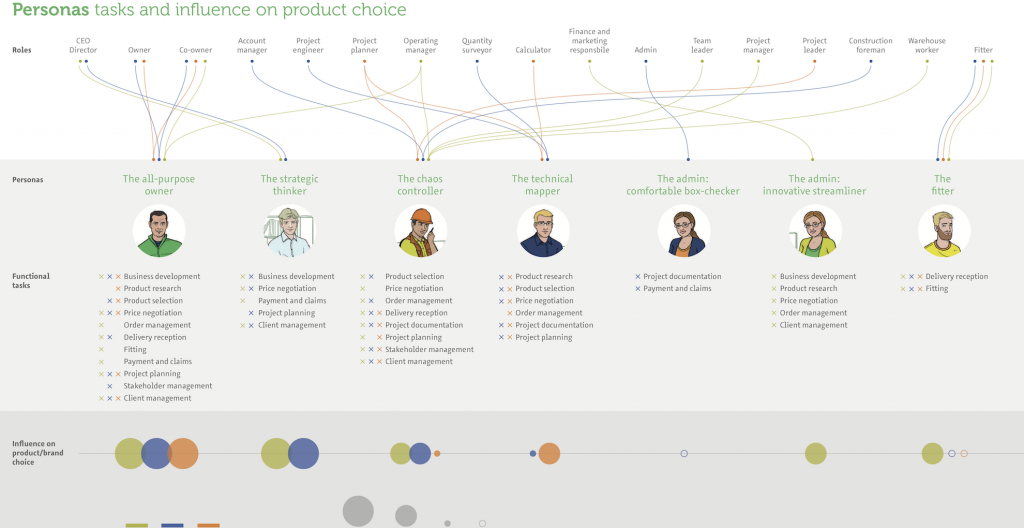
Reinventing customer and supplier interactions for a multinational flooring company Tarkett Share Tarkett, a multinational flooring manufacturer, asked Experientia to explore ways to make them the easiest flooring company to interact with in Europe and the Americas. Experientia conducted in-depth ethnographic research, including contextual interviews and shadowing, in five different countries across Europe, the USA and Russia. We investigated the diverse range of stakeholders of the company, from architects, to flooring installers, wholesalers and retailers. 3 things to know Global research Our benchmark focused extensively on Europe, US, China and Japan while industry experts joined our research from 5 different countries, bringing insights from all around the world. Our local researchers conducted contextual interviews with architects, installers and retailers across five countries, ranging from observations of fitters removing flooring at Paris’ Roissy airport to discussions about design choices with architects in New York. Driving digital transformation Design principles modelled empathic, people-centric frameworks for developing self-service experiences. Innovation playbook in action Experientia designed innovative client-centered product/service solutions to improve supply chain performance, internal processes and company culture and grow Tarkett customer experiences. Gallery In depth Service mix: Design thinking Business strategy design Participatory design Behavioral modeling Ethnography Context A historic manufacturer of flooring products of all types, Tarkett faced the challenge of having to address increasingly fast supply lines at construction sites, while the move to digital experiences meant that they had to rethink and restructure their entire service experience. Challenge Our role as Tarkett’s user experience partner was to consolidate key knowledge dispersed across regional and functional divisions, act as an objective research partner in communicating their customers’ varied service and product needs and propose relevant, innovative solutions to improve the customer experience. Research Experientia interviewed and observed 80+ architects, flooring installers, wholesalers and retailers In USA, France, Netherlands, Sweden and Russia, using a range of ethnographic research methods including expert interviews, contextual inquiries and co-creation workshops. Stakeholders interviews and co-creation exercises with a variety of professional roles mapped the supply chain experience of commercial flooring products and services. Fieldwork results, customer journey maps and personas identified emerging themes ranging from sales relationships to life cycle approaches, product sampling to information management, deliveries to work flow issues. This initiative combined Tarkett’s EMEA, Russia and North America teams to share knowledge and work together on developing promising service concepts. To ensure that expert knowledge was incorporated into foundational research, we conducted stakeholder interviews with a range of employees from country sales managers to C-suite executives, who we involved throughout the research design and ideation processes. Design Experientia generated 150+ service opportunities for the different market segments. Co-design sessions with architects, interior designers, installers and retailers evaluated, prioritised and iterated select service opportunities. High value concepts were developed into concept prototypes and tested in the markets. Impact Our painpoint analysis was taken forward by the company into a detailed action plan: the simplest were addressed immediately, while other were the focus of more structured, longer term interventions. New initiatives and projects were launched, including a service for architects who could send their CAD drawings and renderings to Tarkett with 3 floor choices and would receive a few days later – and free of charge – a completed rendered visualization with those floors. Related projects All Services Behavioral design Research and assessment Strategy B2B Collaboration UI, redesigning the filter navigation experience B2B AR tools for industrial maintenance B2B Driving digital transformation one touch at a time Go back to our portfolio
Low2No: shaping the future of sustainable living
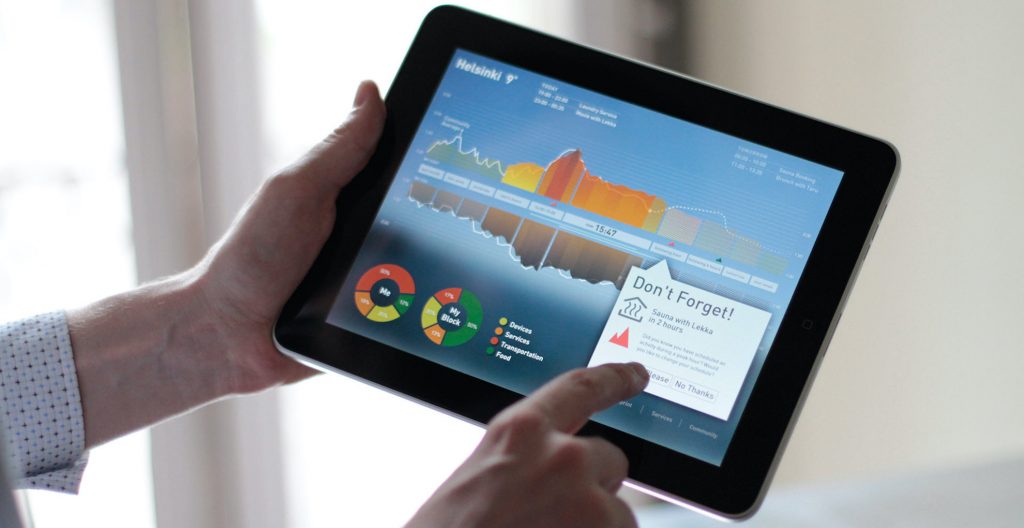
Low2No: shaping the future of sustainable living Sitra, the Finnish Innovation Fund Share In the former container port area of Helsinki, a building block named Airut (“messenger” or “herald” in Finnish) has risen to showcase innovative solutions for green developments worldwide. In collaboration with the engineering firm Arup, the architect studio Sauerbruch Hutton and Galley Eco Capital, Experientia has been a key contributor of this mixed-use development block, which houses around 500 residents, together with small-carbon-footprint services. 3 things to know Creating value through service design We designed energy demand management solutions and services and coordinated “mixed use” service offerings. The core of the service was enabling participatory solutions, such as games, competitions, workshops and websites for all its users. Behavioral change We analyzed drivers of behavioral change like environmental & life constraints, motivation and belief, social pressure and constraints, cultural framework, architectural and interface affordances, and designed fifty initial ideas for tools and services to facilitate behavioral change in Jätkäsaari Award winning Airut and Low2No have already won two awards – the 2011 Italian national prize for innovation in services and an acknowledgement prize in the 2011 Holcim awards for sustainable construction. Gallery In depth Service mix: Prototyping Information architecture Participatory design Service design Ethnography Useful links: Italian National Prize for Innovation in Services Blog post 2011 Holcim awards for sustainable construction Blog post Context The climate crisis requires new ways of designing and living our built environment, particularly in colder countries like Finland. Sitra, the Finnish innovation agency, launched an international competition for a low carbon housing and commercial building complex in Jätkäsaari, a reclaimed goods harbour to the west of central Helsinki, that aims to facilitate behavioural change towards more sustainable lifestyles. Challenge The competition was won in September 2009 by an international team led by global design, engineering and planning firm, Arup, providing engineering and sustainability services. The team also included Berlin-based Sauerbruch Hutton as lead architects and consumer behavior-change strategists Experientia. The building complex covers 22,000 square metres and provides new residences, office and retail space. Emissions are reduced through building design and performance, mobility systems and food production Research As the experience design partner, Experientia’s role has been to nudge the behavior of the people that visit, live and work at Airut, in a lasting sustainable direction. This nudge is being achieved through actively involving potential future residents and entrepreneurs in the development of their future environments, through the design of impactful, sophisticated and sustainable service offerings, and through the creation of behavioral change programmes. Design These interventions help to reduce energy demand and carbon emissions by enabling residents and workers to make better choices about their consumption while enjoying a very high quality of life. They are, in other words, “soft infrastructure” offerings that will complement the block’s “hard infrastructure” for energy and carbon management, including geothermal preheating and cooling, building integrated photovoltaics and a carbon neutral bio-heat product provided by the district heating network. Our specific deliverables have included a behavioral change framework, an award-winning service platform design, and a smart meter user interface design. Experientia has also worked on the planning and design of services, to create, within the Low2No project, a “Food Hub” (offering services related to the purchase, consumption and sharing of regional, organic food, an ethical and sustainable alternative to the products commonly offered in the Finnish market); an “Eco-laundry” (using highly efficient practices and detergents with a low environmental impact); and a communal, wood-fuelled sauna (an eco-friendly response to the presence of a private electric sauna in most Finnish homes). Impact Construction has been completed and the block is now occupied. From now, the sustainable ideals that govern its day-to-day life act as a model and example for the rest of Helsinki, Finland and the world. It has already won two awards – the 2011 Italian national prize for innovation in services (awarded to Experientia), and an acknowledgement prize in the prestigious 2011 Holcim awards for sustainable construction (awarded to the full design team). italian National Prize for Innovation in Services Blog post 2011 holcim awards for sustainable construction Blog post Related projects All Services Behavioral design Research and assessment Strategy Cities & InfrastructureSocial innovation ToNite: social innovation and urban regeneration in Turin, Italy Social innovation Turin Public Libraries, redesigning the cultural experience Social innovation COE, Strengthening access to justice through non-judicial redress mechanisms Go back to our portfolio
Qualitative research on food and drink consumption to develop new consumer services
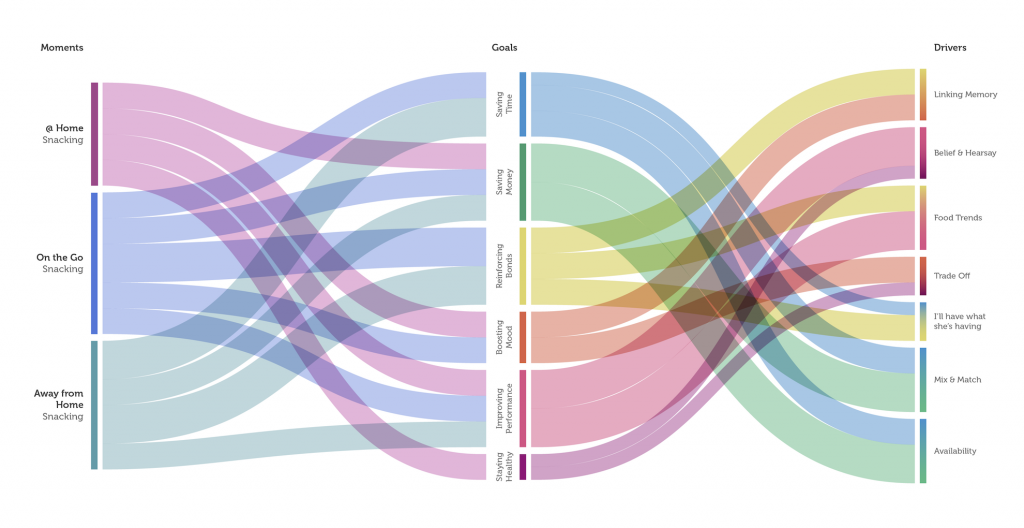
Qualitative research on food and drink consumption to develop new consumer services The Coca-Cola Company Share The Coca-Cola Company has very detailed marketing research, and decided to add to explore the role of ethnography as an additional method to help them identify and map external and internal triggers for beverage consumption. 3 things to know Ethnography as new method An additional method for the Coca-Cola Company to gain insight and explore opportunities. Instagram Participants are asked to take a pictures and describe what they are snacking during the day by receiving a message right before the foreseen snacking time. Insight visualization Strong emphasis on visualization to translate results into actionable opportunities. Gallery In depth Service mix: Design thinking Behavioral modeling Ethnography Context Consumption of food and drink can be tangential and fragmented in our rushed urban lives. The Coca-Cola Company wanted to understand better how to understand people’s behaviors and explore opportunities for new products or services. Challenge The Coca-Cola Company asked Experientia to support them in an ethnographic research project on snack time, that should also act as a learning opportunity for the company. Research Experientia conducted a qualitative research targeting young consumers to help the Coca-Cola Company identify triggers, behaviors and expected rewards in beverage consumption during snack time. The approach involved 9 contextual interviews, 10 hours of fieldwork observations and 4 digital diaries on Instagram accounts. Activities tools such as the routine map, the beverage cards and the packaging cards supported the researchers to collect data from participants’ stories. The insights have been later visualized in order to identify new opportunity areas for the Coca-Cola Company. Design Although mostly a research project, we explored design visualizations to help the company representatives better make sense of the results. Impact The results were presented during an internal workshop in Milan with marketing managers from across Europe, who then iterated on the topics identified, and matched them with their own data. Related projects All Services Behavioral design Research and assessment Strategy Consumer technology Buttonless: engaging users in interactions with keyless devices Consumer technologyFinance BancoSmart, an award-winning ATM Consumer technology Exploring urban dwelling usage to inform appliance design Go back to our portfolio
Exploring urban dwelling usage to inform appliance design
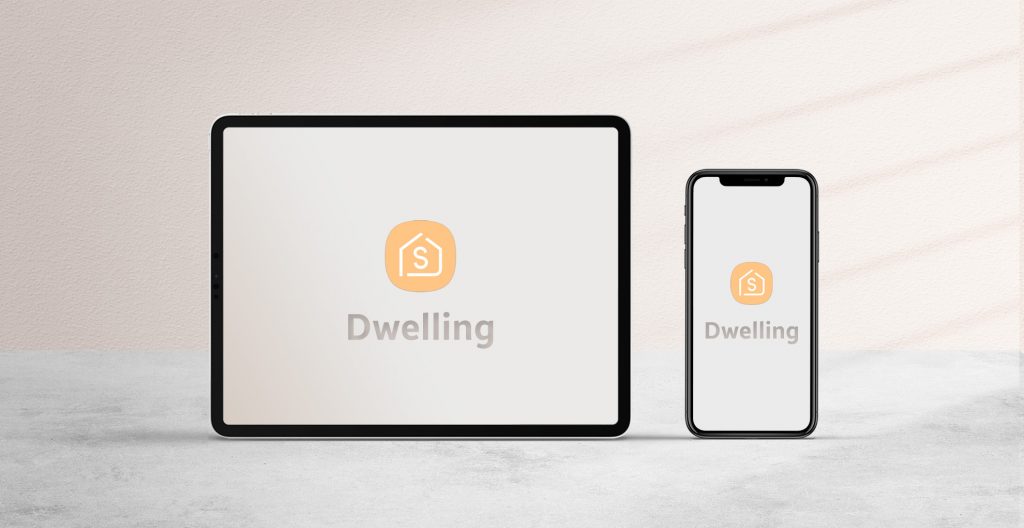
Exploring urban dwelling usage to inform appliance design Samsung Share As the urban population (>75%) is supposed to continue its growth, dwellings demand will follow along. The client requested an analysis of Europe’s housing market, its recent past and emerging trends. Focusing on millennials, the generation approaching the property market, we investigated emerging drivers for both dwelling and major household appliances. 3 things to know Dwelling space is increasingly a premium In the three cities, singles/couples look for 55-65 sq m apartments; families are more focused on 70-80 sq m. It is also common for single people to live in studio apartments (about 30 sq m), especially in Milan and Stockholm. House minimum set-up Tenants in Berlin and Milan usually find, in the dwellings they rent, some basic pieces of furniture (table, chairs, beds) besides a functioning kitchen complete with cabinets. Appliances are transient When renting, people have a temporary attitude towards appliances and they tend to buy either less expensive (to leave-in when relocating), small (e.g. toaster, kitchen robot), or portable ones (e.g. free standing fridges). Gallery In depth Service mix: Business strategy design Behavioral modeling Ethnography Context We supported a client in mapping European changes in residential space, identifying population structures in urbanized areas, while highlighting areas where millennials aspire to live. The research predicts changes in the layout and setup of urban abodes and derives opportunities for base-line vs luxury appliance configurations. Challenge We investigated the EU property market and the demographics of Germany, Italy and Sweden to define the target sample fitting the research brief. The ensuing fieldwork aimed at involving realtors, interior architects and millennial owners and tenants in Berlin, Milan and Stockholm. Research We conducted an extensive fieldwork across Europe, touching 3 cities. Contextual interviews and dwelling observations involved 7 realtors, 19 residents and 3 local experts. The visits in millennial homes exposed the research team to the attitude, lifestyle and purchase drivers of this new generation of tenants and owners. Design The analysis of the extensive body of evidence collected resulted in insights about key drivers influencing millennials’ purchase of dwellings as well as home appliances. Participant profiling guided the team in identifying opportunities for home appliance brands that aim at addressing the expectations of millennial customers. Impact The research helped shed light on initial assumptions, discovering evidences for decoupling prime properties and luxury consumer products: people expect kitchen appliances to come in “kits” linked to kitchens. Customers expect to refer to kitchen suppliers for all issues pertaining kitchen components. As cooking habits change and fresh food consumption increases, people tend to forgo appliances that are culturally connected to long-term food preservation. Open floor plans entail kitchens, and the appliances therein are always on the front-stage. When use scenario switches to full entertainment or living, appliances should be able to blend with the rest of the interior. Related projects All Services Behavioral design Research and assessment Strategy Consumer technology Buttonless: engaging users in interactions with keyless devices Consumer technologyFinance BancoSmart, an award-winning ATM Consumer technology Finding entertainment on the go Go back to our portfolio
Singapore: a city for people aging gracefully
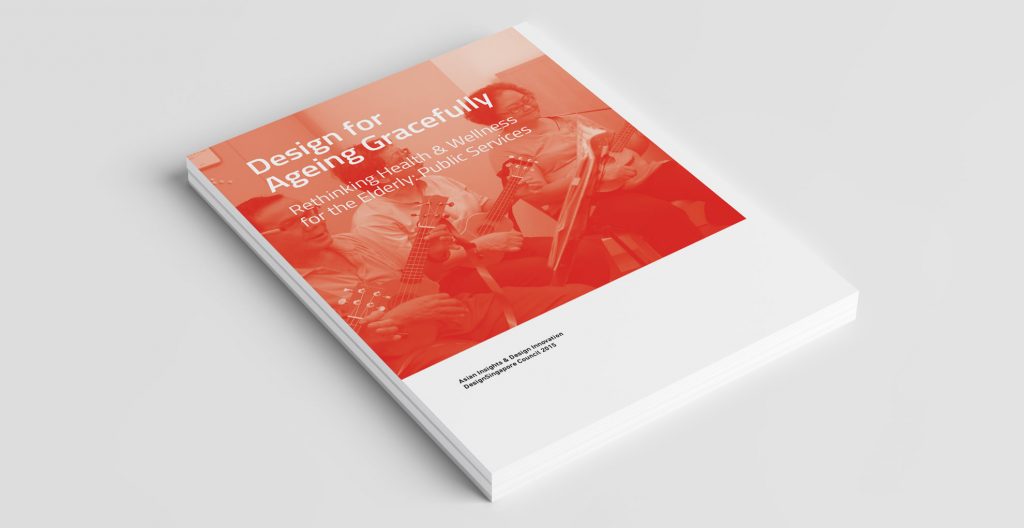
Singapore: a city for people aging gracefully DesignSingapore Council Share DesignSingapore Council asked Experientia to explore health and wellness for the elderly in the Singaporean public sector. We conducted ethnographic research and participatory design workshops, as part of a drive to develop design-led innovation for the health industry. 3 things to know Design ethnography and service design Experientia explored current healthcare experiences of the aging population in Singapore through design ethnography identify opportunities for design-driven innovation in public healthcare. We identified opportunity areas for design-driven innovation in the Singaporean public healthcare space to help Singapore create the right conditions to support a rapidly aging society. Interactive map of findings The interactive map allows people to browse the personas alongside field research videos, that communicate the research findings in the participants’ own words. Long lasting impact The findings have been incorporated in the Health Ministry’s ongoing Action Plan For Successful Ageing, and guided the development of a new residential impact. Gallery Singapore is proactively addressing the problems of a rapidly aging society We explored what is like to grow older in Singapore today, carrying out contextual interviews and shadowing with elderly people, their carers, and people with the healthcare industry. In participatory design workshops with Singaporean stakeholders, we introduced experience design guidelines and created concepts and strategies to improve the elderly healthcare system in Singapore. Our 8 personas show different experiences of aging and using the healthcare system in Singapore. Our customer journeys maps show the typical issues the participants experiences as they tried to manage their health. In depth Service mix: Design thinking Policy development Envisioning Participatory design Service design Behavioral modeling Ethnography Useful links: Download the pdf English language Website External link Singapore press External link Press release External link Press article External link Press article External link Context By 2030, Singapore will experience a profound shift in its age demographics with the elderly population increasing by three times. This calls for a radical change in perspective on how care can be better delivered to the elderly. Challenge To prepare and plan for that change, The DesignSingapore Council’s Asian Insights and Design Innovation (AIDI) programme embarked on a Rethinking Health and Wellness for the Elderly project to look into developing design solutions that better meet the needs of the elderly in Singapore, and asked Experientia to carry out an extensive research and analysis project , including a workshop with participating public agencies and services from the Singapore healthcare system. Research The project started with an understanding of global trends in elderly healthcare services. This was then followed by a design ethnography study through interviews and shadowing – to gather deep qualitative insights into the habits and behaviours of the elderly and to identify trends, behaviors and gaps in the interaction between elderly people and the healthcare system. From the observations, we learned about how the elderly think, act and feel towards managing their health at home and their needs and wants. Experientia developed 8 personas to begin the process of designing for behavioural change and explore solutions like ageing-in-place, peer-to-peer support and community platforms to solve some of the elderly healthcare issues. Participatory workshops allowed stakeholders from the public to be part of this process generating 12 main user-centred design concepts. In two multi-day innovation workshops with healthcare and public service stakeholders, representatives from the healthcare industry and public sector joined Experientia and DesignSingapore Council in Singapore. Here we introduced the challenges the participants face on a daily basis, showing video clips from the research to reveal the human faces behind the research. The stakeholders developed service concepts that would suit the unique characteristics of Singapore. Design Experientia team designed an interactive map of findings, a rich database resource that invites stakeholders to explore and be inspired to innovate and design relevant solutions for the ageing population. The concepts were useful to guide Singaporean healthcare agencies to create strategies, policies and services. The results of the project were compiled in a handy publication for further use in Singapore and freely available for anyone. As part of the project, Experientia also worked with Singaporean agencies and ministries to devise community-focused concepts for elderly residents in the Kampung Admiralty residential block. Co-creation workshops prototyped key policy decisions on ageing, health and housing. Impact Experientia’s report recommendations were widely reported in the Singapore press and were integrated in the Government’s $3billion Action Plan for Successful Ageing (website – pdf – press release – press article). The Kampung Admiralty residential block has been completed. It incorporated many of the concept ideas that were co-created in the Experientia-lead workshops. Download the pdf English language Website External link Singapore press External link Press release External link Press article External link Press article External link Related projects All Services Behavioral design Research and assessment Strategy Cities & InfrastructureSocial innovation ToNite: social innovation and urban regeneration in Turin, Italy Health GoCare: Interactive dashboard for a better home hospitalization service Health Rare disease patient journey mapping Go back to our portfolio
COE, Strengthening access to justice through non-judicial redress mechanisms
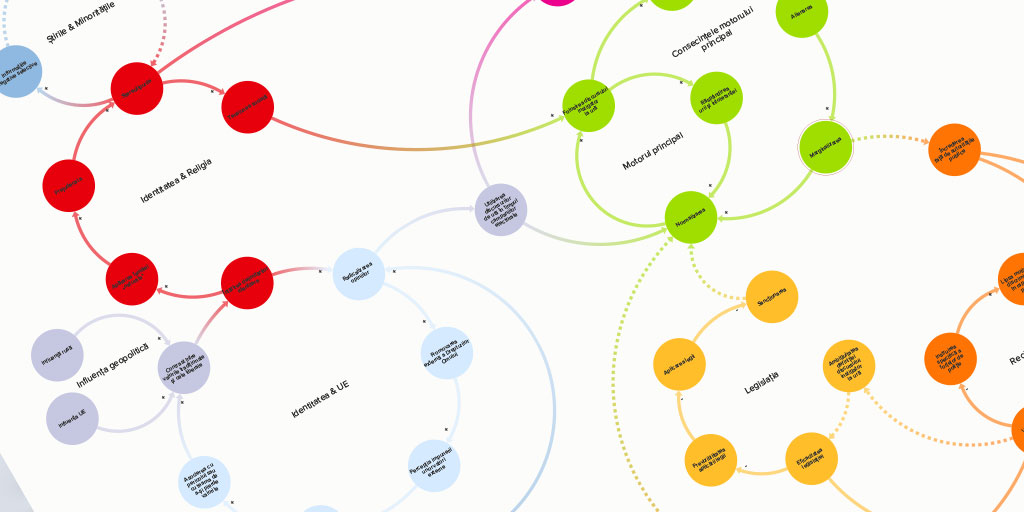
COE, Strengthening access to justice through non-judicial redress mechanisms Council of Europe Share In recent years, we have all become aware of the threat hate speech poses to human rights, democracy and the rule of law. Developing effective strategies to address it has become a major concern for national authorities and civil society actors across Europe. The Council of Europe selected Experientia to map the hate speech mechanisms within some EU countries. 3 things to know The importance of stakeholders Meeting the different stakeholders was essential to understand what were the commonly shared problematics and the specific ones related to each actor. The inclusion of stakeholders in a workshop to define the prioritary issues to overcome was essential, though many different perspectives. A new approach Through meetings with experts, desk research and readings, the team outlined some of the specific aspects and actors contributing to the current situation of hate speech, both in public and private contexts. The team developed a systemic map whose aim is to outline the main mechanisms and factors (and their interconnections) leading to hate speech countries. Future directions and policies The data gathered was useful to map some actions undertaken (mitigating or balancing factors) to prevent and combat hate speech, but also to grasp some early signals of potential future initiatives having an impact on Hate Speech. Gallery In depth Service mix: Envisioning Ethnography Context The Council of Europe selected Experientia to map the hate speech mechanisms within some EU countries. In recent years, awareness has been raised of the threat hate speech poses to human rights, democracy and the rule of law. Challenge Developing effective strategies to address it has become a major concern for national authorities and civil society actors across Europe. Such strategies should enable member states to significantly reduce the incidence and spread of hate speech, while respecting freedom of expression. Experientia mapped the hate speech mechanism and its involved variables through an extensive system map that helped to identify the gaps to fill in the legal framework, in the local services and in the collaboration between public authorities, citizens and politics in the countries that were part of the project. Research During the first phase of the project, Experientia collected and went through a number of documents and reports provided by the local consultants in each country: to build familiarity with the topic. The team went on with the Stakeholder Interviews and took part in a formative workshop session held by the Council of Europe. The stakeholder interviews allowed us to investigate the topic from different perspective and they helped to better detail the draft of the systemic map that was under definition. Design Experientia used the findings from the interviews and the documents to iterate the systemic map and write the systemic analysis report. In particular, we held two ideation workshop to create a space to define and agree upon potential opportunities and measures to be taken against the hate speech spreading and the leading institutions that will coordinate the development of such opportunities in the future. Related projects All Services Behavioral design Research and assessment Strategy Cities & InfrastructureSocial innovation ToNite: social innovation and urban regeneration in Turin, Italy Social innovation Turin Public Libraries, redesigning the cultural experience HealthSocial innovation Singapore: a city for people aging gracefully Go back to our portfolio
CSA: sentiment-based decision support platform for crypto-currency trading
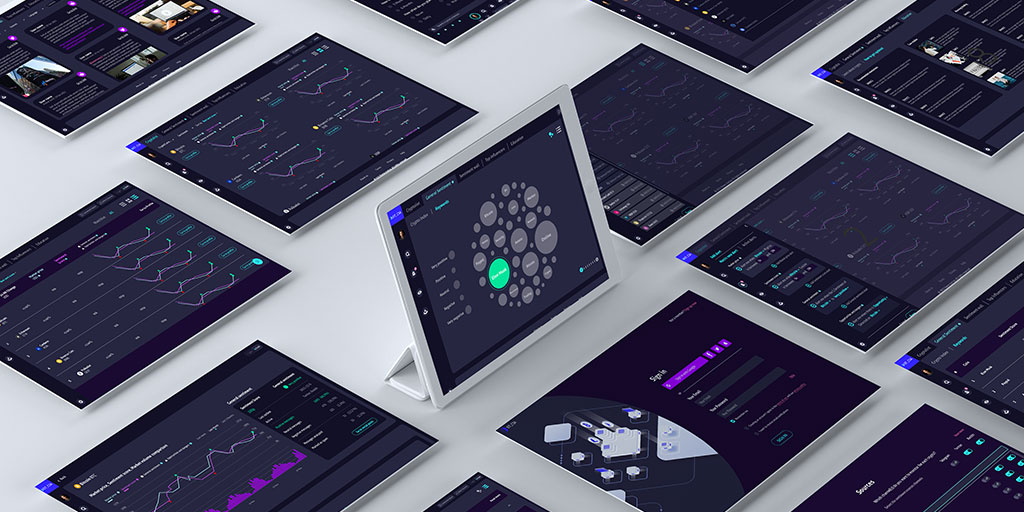
CSA, Sentiment-based decision support Platform for crypto-currency trading EIT Digital, European Research Project Share As a partner of the CSA-Crypto Sentiment Advisor (an EIT research project), Experientia co-designed a web-based dashboard to inform better decisions in the crypto market. Leveraging traders’ individual level of expertise, the solution aims to mitigate risk by using real-time community sentiment data. 3 things to know Understand the habits of cryptotraders By interviewing cryptotrading experts and cryptotraders with different levels of experience, we were able to understand their habits, their sources of information, and the web platforms currently most used by those who invest in cryptocurrencies. Define the value proposition Using co-design methodology we worked with other project partners to identify a USP and the platform’s MVP: a dashboard to inform better decisions in the crypto market by using real-time community sentiment data. Design and validate the MVP solution Based on the results of the research and the co-design work done with the project partners, we designed the UX/UI of the platform, validated it with user interviews, and defined web development specifications. Gallery In depth Service mix: Design thinking Prototyping Information architecture Participatory design Ethnography Context As a partner of the CSA-Crypto Sentiment Advisor (an EIT research project), Experientia co-designed a web-based dashboard to inform better decisions in the crypto market. Leveraging traders’ individual level of expertise, the solution aims to mitigate risk by using real-time community sentiment data. Challenge The platform is based on a sentiment analysis model for cryptocurrency using advanced machine learning methods. Investors can use the signals to manage volatile phases of their portfolio to be well positioned in difficult times. During the research phase, Experientia conducted research interviews with lead users and led co-design activities with project partners to identify the Value proposition and the MVP functionalities. In the design phase, we designed the dashboard prototype and validated it with potential users. Research During the “early bird period” November-December 2020 Experientia research team conducted remote stakeholder interviews. The in-depth interviews allowed us to investigate the research question from a broad, comprehensive perspective. The main objective of the research was to investigate and identify opportunities for helping cryptotraders with sentiment-analysis tool. Model At the beginning of 2021 Experientia conducted 2 workshop with all the partners. We shared insights from the stakeholders and user research phase to inform and define the value proposition. Through participatory and co-design methodologies we facilitated the development of the next phases as well as conducted UX concept ideation activities. Design Experientia utilized findings from research to frame and define solutions for the design phase. In particular we design and validate the HI-fi prototype of the Sentiment-based decision support Platform for crypto-trading. Related projects All Services Behavioral design Research and assessment Strategy Finance Banca 5, a new branchless bank model Consumer technologyFinance BancoSmart, an award-winning ATM FinanceHealth XME Salute: integrating insurance offerings with wellness and health practices Go back to our portfolio
Customer experience insights to innovation

Customer experience insights to innovation Deutsche Telekom (Germany, Greece, Hungary, Slovakia) Share Experientia has been commissioned by Deutsche Telekom to conduct multiple research activities aimed at envisioning opportunities for new products and services development with diverse time horizons. 3 things to know Improve Deutsche Telekom customer’s home experience Expand upon the range of Deutsche Telekom clients and reshape its existing customer home business. Multi-horizon innovation strategy Identify new business opportunities both for incremental innovation and as opportunities around future needs and trends. Design best practice guideline for CX research Involve internal stakeholders and share project outcomes as a strategic roadmap for innovation research at Deutsche Telekom. Gallery User scenarios User scenarios Insights clustering Workshop day Workshop day In depth Service mix: Design thinking Participatory design Service design Ethnography Useful links: Link External link Context Since home consumer behaviors and needs change over time influenced by various factors such as technological advancements, economic conditions, cultural trends, and individual preferences it is important to keep and a human-centered approach in order to understand if we are addressing the evolving needs and expectations and understanding how to improve existing experiences and design new ones also in the long term. Challenge Identify customer experience strategy that evolves home consumer business opportunities and improves customer experience. Research Experientia has started by conducting stakeholder interviews and hypothesis workshop to define research directions and align with Deutsche Telekom stakeholders. Social media listening activity has coupled with a market and trend research to understand macro phenomenon and identify weak signals, emerging practices and major trends that may have local impact. Expert interviews have been conducted to understand their perspective of the changing customer needs, while in-home customer and lead user interviews helped to understand users behavior and observe emerging behaviors respectively. Design Experientia has analyzed the emerging research information and identified relevant insights. The interview insights have been prioritized using customized analysis-based design tools. Thematic insights have helped to identify moments that matter during customer experience. This information has determined a relevant impact in problem reframing and subsequently in creating initial opportunities, that serves as a basis to shape innovative concepts and value propositions for improving existing experience and shaping new solutions. Impact Experientia created 10 innovative concept value propositions that include added value for current CX, products, service and future products and services experiences. for improving customer experience to successfully defend/reshape business efforts and increase footprint in the homes and minds of Deutsche Telekom customers. Link External link Related projects All Services Behavioral design Research and assessment Strategy Consumer technology Buttonless: engaging users in interactions with keyless devices Brand UXConsumer technology European car aesthetics: Unveiling preferences and values Brand UXConsumer technology Mobile Privacy UX Go back to our portfolio
Mobile Privacy UX

Mobile Privacy UX Samsung (South Korea) Share Experientia has worked for Samsung Electronics on a wide variety of projects since 2005 that covered different phases of their design process. This project was commissioned from Samsung South Korea and aimed to understand how users interpret privacy, both from a wide and narrow perspective, in order to support Samsung in the design of new privacy-related products and services. 3 things to know What users are talking about when they say “Privacy” For people privacy is an important good in itself.Privacy concerns are higher in a mobile ecosystem; to overcome this issue, companies have to rely on the trust that people grant them, and should aim to build stronger user confidence. Security and Privacy are different breeds The tech community has pushed a narrative where privacy is articulated as data security, which in turn gets translated in settings and features. This is challenging for people. Being comfortable with one’s own data What people share in the digital environment is tightly associated with the perceived risk of this action. The seriousness of risk is identified by two dimensions: the perceived distance of data disclosure consequences, and the affinity to people’s daily lives. Gallery What people share in the digital environment is tightly associated to the perceived risk of this action. How competitors address privacy Our approach Opportunity map In depth Service mix: Design thinking Ethnography Useful links: Link External link Context People who care about their privacy often feel that they are “forced” to disclose personal data, and are concerned that they don’t really know what they are really disclosing. To map this better, it’s important to start with the acknowledgement that peoples’ notions of privacy often differ significantly from how the industry and media approach this subject. Challenge Samsung asked Experientia to conduct a research to understand how users interpret privacy, in order to gain insights on users’ habits and concerns related to smartphone use, and to define UX solutions that tackle their pressing needs. Research Experientia conducted a thorough assessment of key privacy features in 3 devices. Social media listening shed light on the ongoing discussion about privacy on social media. We also interviewed users in different countries to collect a direct account of what they think privacy means for them and identify key aspects of people’s everyday life that are impacted by technology and how these aspects raise privacy safeguard concerns. The team finally engaged in conversations with experts to earn insights on broader privacy implications to add value to the research as they helped in identifying some crucial topics to discuss with users. Design Based on the fieldwork evidence, Experientia defined a privacy framework to synthesize how people address their privacy needs in the digital domain. The issues identified by researchers were re-formulated as “How might we…” questions. Experientia identified several high-level opportunities indicating possible alternative options to tackle each broader research-driven issue. Each issue with its challenge and connected recommendations was addressed by a set of opportunities indicating potential areas of intervention. Impact Experientia helped Samsung in better understanding privacy from peopler’s perspective and in defining human-centered design directions and actionable principles that could enhance the user experience addressing users’ pressing needs while simultaneously achieving two objectives: “make safe” and “feel safe”. Link External link Related projects All Services Behavioral design Research and assessment Strategy Consumer technology Buttonless: engaging users in interactions with keyless devices Brand UXConsumer technology European car aesthetics: Unveiling preferences and values Consumer technology Customer experience insights to innovation Go back to our portfolio

